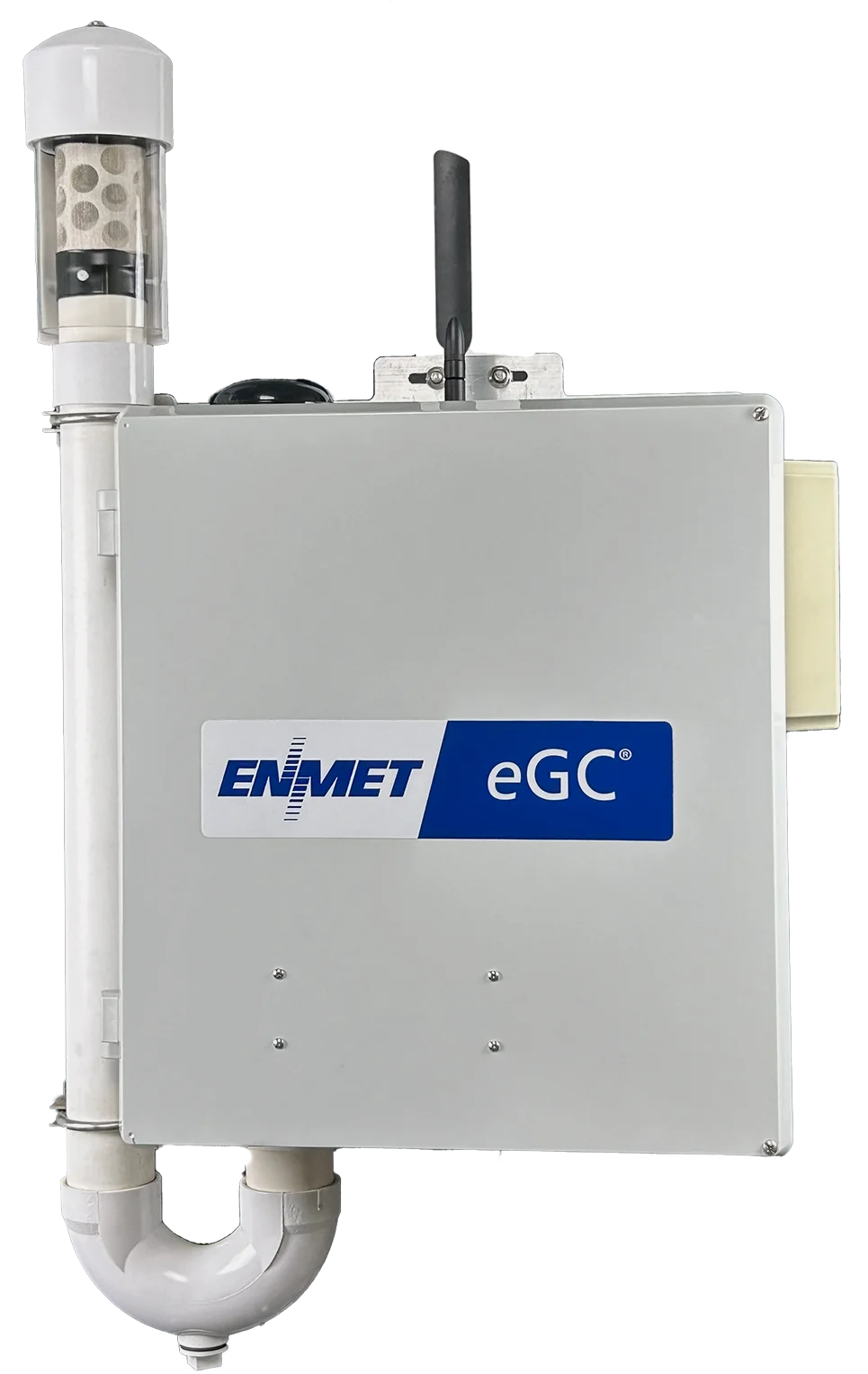The ENMET eGC (environmental Gas Chromatograph) appears to be a sophisticated and innovative solution for trace toxic chemical monitoring in field applications. Here are some key features and advantages highlighted from the information provided:
- Autonomous Operation: The eGC is designed to operate autonomously, making it suitable for field applications. This capability reduces the need for constant user interaction and allows for convenient deployment to specific emission and remote site areas.
- Subparts per Billion Analysis: The eGC is capable of performing trace-level analysis, with the ability to detect and identify specific hydrocarbons such as Benzene, Toluene, and Xylene at subparts per billion levels. This high sensitivity is crucial for monitoring and controlling environmental pollutants.
- Solar-Powered Mobility: The instrument operates using solar power, providing mobility and flexibility in deployment. This feature is especially valuable for applications in remote areas where access to traditional power sources may be limited.
- Harsh Environmental Conditions: The eGC has been tested to operate in harsh outdoor conditions, with an ambient temperature range of 14°F to 115°F. This robustness ensures its reliability in various climates and environments.
- Long Field Life with Minimal Maintenance: The system is designed to last for years in the field with minimal planned maintenance. This longevity and reliability reduce the need for frequent field interventions, enhancing the efficiency of the monitoring process.
- Comprehensive Data Reporting: The eGC not only provides chemical analysis data but also reports weather information, including wind speed and direction, along with GIS position data. This comprehensive reporting offers a holistic view of the environmental conditions at the monitoring site.
- Data Transmission and Security: The analysis data, including environmental parameters, is transmitted via a cellular modem to an encrypted server. This ensures the security and integrity of the data. Users can access the information from anywhere in the world through a web interface, providing real-time monitoring and management capabilities.
- Affordability and High Performance: The eGC is described as offering high performance at a very affordable price. This combination of advanced technology and cost-effectiveness makes it an attractive solution for organizations and industries requiring trace-level field analysis.
To learn more about the eGC’s operating system and interface, interested parties are encouraged to check out the provided videos for a more in-depth understanding of its capabilities and functionalities.
Typical Analysis Range: 0.5ppbv to 200 ppbv
Analysis Time: 10 minutes
User Interface: Cloud Based Web
External Communication: Cellular Modem
Back up Data: Datalogger and Cloud
Calibration Frequency: Automatic
Carrier Gas Scrubber: ≈4 to 6 months
Input Power: 110 -240VAC, 12 VDC Battery/Solar Array
Operating Temperature: -10 to 45°C or 14° to 113°F
Dimensions: 44.5 x 49.5 x 21.3 cm 19.5 x 19.5 x 9.5 inches
Weight: 44 lbs, 19.95Kg
Gas Monitored:
- Benzene
- Benzene, Toluene, o-Xylene
- Butyl Acetate
- 1-3 Butadiene
- Vinyl Chloride
- Chloroprene
- Ethylene Oxide

